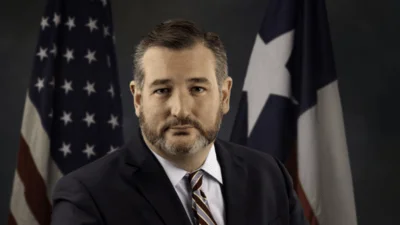The Congressional Record is a unique source of public documentation. It started in 1873, documenting nearly all the major and minor policies being discussed and debated.
“TRAVEL PROMOTION ACT OF 2009--Continued” mentioning the U.S. Dept. of Commerce was published in the Senate section on pages S9160-S9161 on Sept. 9, 2009.
The publication is reproduced in full below:
TRAVEL PROMOTION ACT OF 2009--Continued
Mr. KYL. Mr. President, I hoped that my colleague from North Dakota might be here, and perhaps we will still get together before the debate concludes on the tourism bill. But I think we were two ships passing in the night earlier today. He was quoting statistics that had to do with individual people. I was quoting statistics that had to do with monetary receipts. We were both getting at the problem of whether tourism was up or down, and I told him I would get the source of my statistics and we could reengage in that debate.
The primary point the Senator from North Dakota was making was that from his statistics, relating to the number of people, tourism was down. I had asserted that based upon Commerce Department statistics tourism receipts were very much up. So let me quote the statistics from the Office of Travel and Tourism Industries at the Commerce Department for 2008. I quote:
Total travel receipts reached unprecedented levels in 2008, with a record-breaking $142.1 billion on travel to, and tourism-related activities, within the United States--an increase of 16 percent over the previous record set in 2007.
That is what I had quoted earlier today.
The Senator from North Dakota said: Well, my statistics show that tourism is down. I think he was quoting numbers of tourists. I do not know whether that discrepancy is real. I do not question his statistics, but I did want to verify mine come from the Department of Commerce. Presumably they are valid.
He had also raised a question as to whether that includes travel from Mexico and Canada. My understanding is, yes, this statistic does include receipts for travel and tourism for all travelers to the United States, which would include Mexico and Canada.
Also, according to a press release and information that was gathered by the Senate Republican policy committee, the Commerce Department's Office of Travel and Tourism Industries also issued a travel forecast in May of 2009 that foreign travel will reach a record high of 64 million travelers to the United States by the year 2013. Again, that includes travel from all countries, which would include Mexico and Canada.
The Commerce Department also estimates that travel to the United States by visitors from countries other than Mexico and Canada should rebound by 2012. The point is that through a series of situations, including, primarily economic conditions, there has been a lower level of travel after 2008 by overseas travelers.
This Commerce Department forecast also said, as I said earlier today, it is important to continue to work on those initiatives which will facilitate visits by overseas travelers, including adequate infrastructure of ports of entry, visa services, and funding to make the online registration requirements for foreign visitors truly easy and operational.
My point earlier today was that rather than charging $10 a visa for foreign travelers to come here to encourage more foreign tourism, which seemed to me to be rather counterproductive, and since there is plenty of travel promotion activity by the Department of Commerce, by States, by localities--you can hardly turn on the TV without seeing some community or State advertising, promoting tourism within its area--that what we should be doing is devoting any resources we have available for this purpose to improving the infrastructure at our ports of entry, our visa requirements, and other travel accommodations for those visitors who do come here so it is easier to come here.
I would note I just read a story in the Arizona papers today that talked about the passport requirements from Mexico and Canada. They have been in effect for Mexico, but they are newly instituted with respect to Canada. As a result, theme parks in New York State, for example, had noted their activity from Canada was down somewhat. They attributed it to soggy weather, the state of the economy, and the additional passport requirement. I am sure all of these are factors.
So I suspect the statistics my colleague from North Dakota was citing were accurate statistics, as were, obviously, the ones I cited from the Department of Commerce.
The bottom line point I was trying to make is that we have a lot of people who come to this country. We make a lot of money from them. We want to encourage that, to be sure. But I did not think we were encouraging it when we put a $10 fee on every visa for foreign tourists, and that we might want to--if we had that money available, or if we wanted to attract more visitors, the better way to do it would be to make our ports of entry and the other facilities by which people access entry to the United States more accommodating to them. Those were reasons I believed made this legislation unnecessary and unwise.
Mr. President, I suggest the absence of a quorum.
The PRESIDING OFFICER. The clerk will call the roll.
The legislative clerk proceeded to call the roll.
Mr. KYL. Mr. President, I ask unanimous consent that the order for the quorum call be rescinded.
The PRESIDING OFFICER. Without objection, it is so ordered.
____________________








